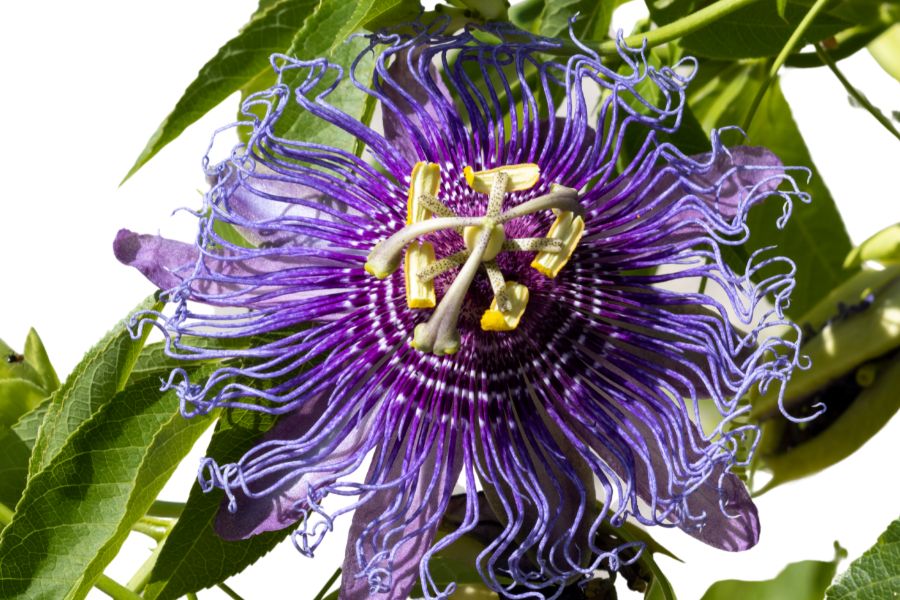Arkansas hides many natural foods you can gather for free. The Natural State offers wild fruits, mushrooms, and plants throughout its forests and fields. Learning where to find these goodies will fill your pantry with flavors from nature itself.
Foraging connects you to Arkansas’s land in ways grocery shopping cannot. You walk among trees that Native Americans and early settlers relied on for food. The skills of spotting edible plants serve both modern survival needs and kitchen adventures.
Spring brings tender greens and berries across Arkansas’s diverse regions. Summer fills the Ozarks with blackberries while fall delivers nuts and mushrooms in abundance. Each season offers something unique from the wild landscape.
The best foraging happens when you know which environments hold what foods. River bottoms grow pawpaws while upland forests hide valuable morels. Learning these patterns helps you fill baskets with wild foods during each outing.
There’s a surprising richness to the Arkansas landscape if you know what to look for. Between the native nuts, wild fruits, flowering herbs, and edible roots, the list of possibilities keeps expanding. With just a little bit of knowledge, you can walk away from the woods or field edge with an impressive variety of wild, valuable food.
What We Cover In This Article:
- What Makes Foreageables Valuable
- Foraging Mistakes That Cost You Big Bucks
- The Most Valuable Forageables in the State
- Where to Find Valuable Forageables in the State
- When to Forage for Maximum Value
- The extensive local experience and understanding of our team
- Input from multiple local foragers and foraging groups
- The accessibility of the various locations
- Safety and potential hazards when collecting
- Private and public locations
- A desire to include locations for both experienced foragers and those who are just starting out
Using these weights we think we’ve put together the best list out there for just about any forager to be successful!
A Quick Reminder
Before we get into the specifics about where and how to find these plants and mushrooms, we want to be clear that before ingesting any wild plant or mushroom, it should be identified with 100% certainty as edible by someone qualified and experienced in mushroom and plant identification, such as a professional mycologist or an expert forager. Misidentification can lead to serious illness or death.
All plants and mushrooms have the potential to cause severe adverse reactions in certain individuals, even death. If you are consuming wild foragables, it is crucial to cook them thoroughly and properly and only eat a small portion to test for personal tolerance. Some people may have allergies or sensitivities to specific mushrooms and plants, even if they are considered safe for others.
The information provided in this article is for general informational and educational purposes only. Foraging involves inherent risks.
What Makes Foreageables Valuable
Some wild plants, mushrooms, and natural ingredients can be surprisingly valuable. Whether you’re selling them or using them at home, their worth often comes down to a few key things:
The Scarcer the Plant, the Higher the Demand
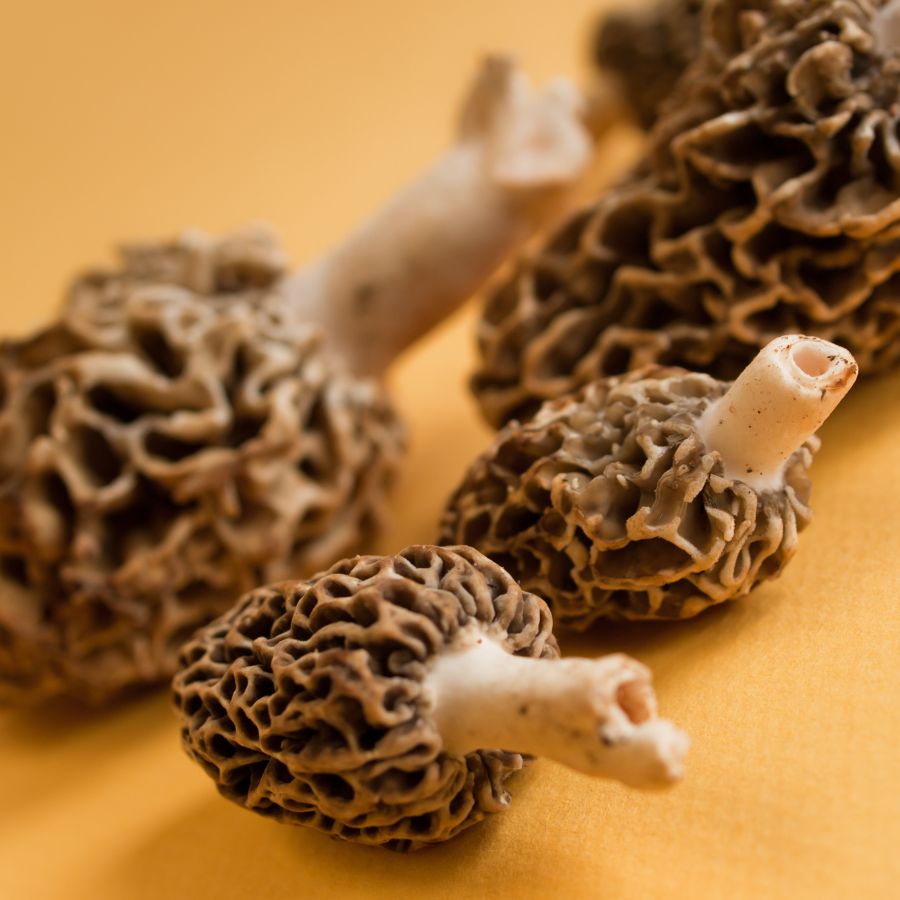
Some valuable forageables only show up for a short time each year, grow in hard-to-reach areas, or are very difficult to cultivate. That kind of rarity makes them harder to find and more expensive to buy.
Morels, truffles, and ramps are all good examples of this. They’re popular, but limited access and short growing seasons mean people are often willing to pay more.
A good seasonal foods guide can help you keep track of when high-value items appear.
High-End Dishes Boost the Value of Ingredients
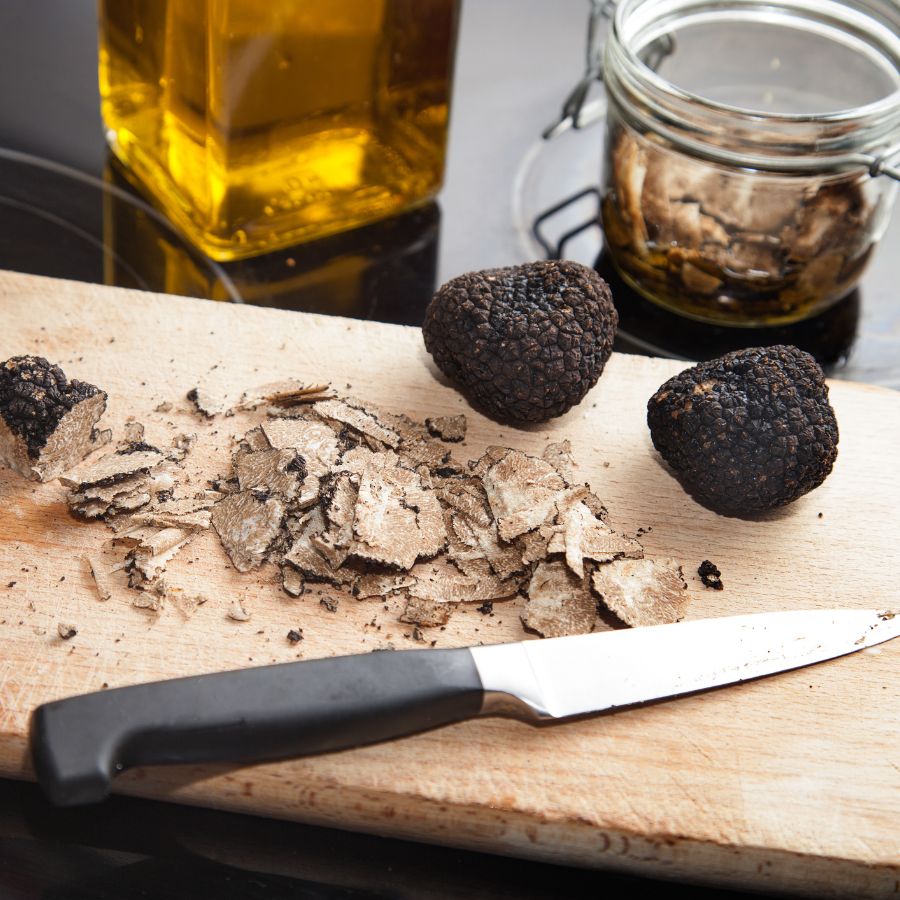
Wild ingredients that are hard to find in stores often catch the attention of chefs and home cooks. When something unique adds flavor or flair to a dish, it quickly becomes more valuable.
Truffles, wild leeks, and edible flowers are prized for how they taste and look on a plate. As more people try to include them in special meals, the demand—and the price—tends to rise.
You’ll find many of these among easy-to-identify wild mushrooms or herbs featured in fine dining.
Medicinal and Practical Uses Drive Forageable Prices Up
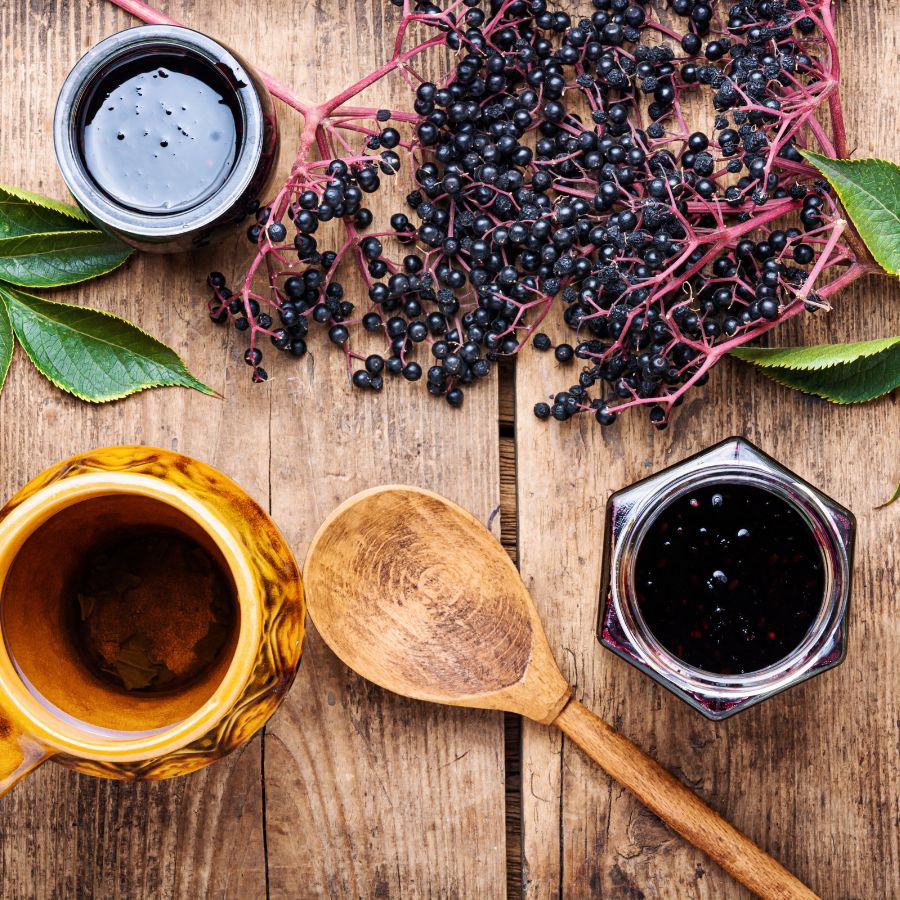
Plants like ginseng, goldenseal, and elderberries are often used in teas, tinctures, and home remedies. Their value comes from how they support wellness and are used repeatedly over time.
These plants are not just ingredients for cooking. Because people turn to them for ongoing use, the demand stays steady and the price stays high.
The More Work It Takes to Harvest, the More It’s Worth
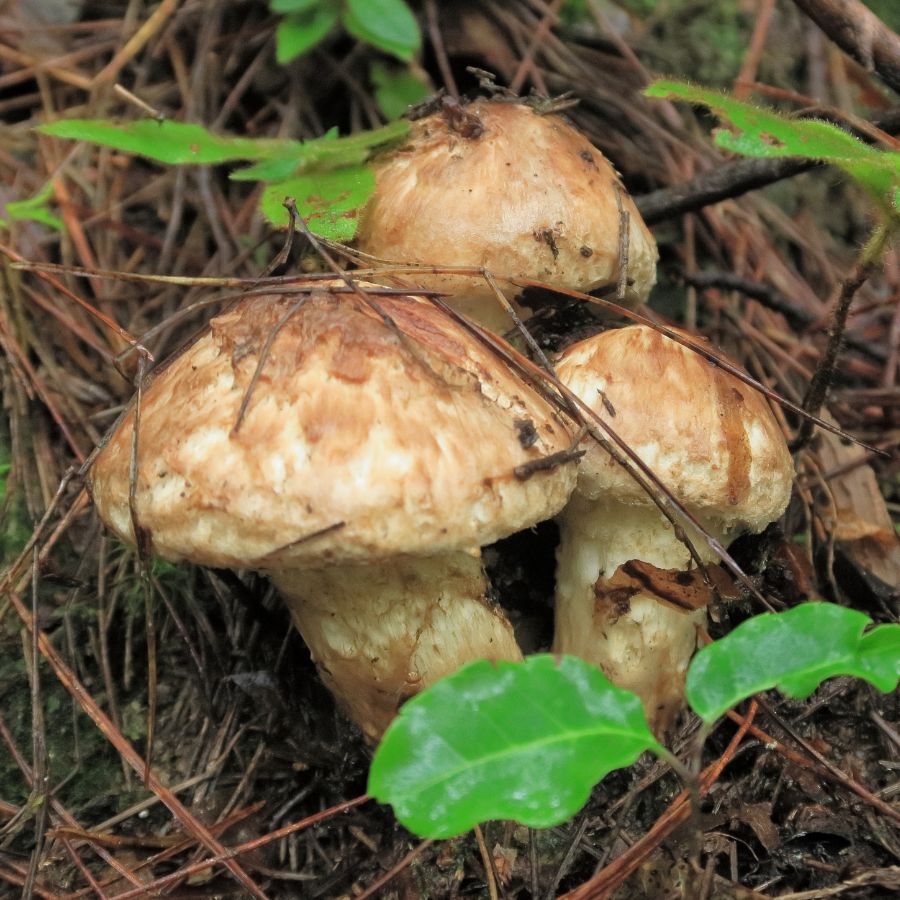
Forageables that are hard to reach or tricky to harvest often end up being more valuable. Some grow in dense forests, need careful digging, or have to be cleaned and prepared before use.
Matsutake mushrooms are a good example, because they grow in specific forest conditions and are hard to spot under layers of leaf litter. Wild ginger and black walnuts, meanwhile, both require extra steps for cleaning and preparation before they can be used or sold.
All of that takes time, effort, and experience. When something takes real work to gather safely, buyers are usually willing to pay more for it.
Foods That Keep Well Are More Valuable to Buyers
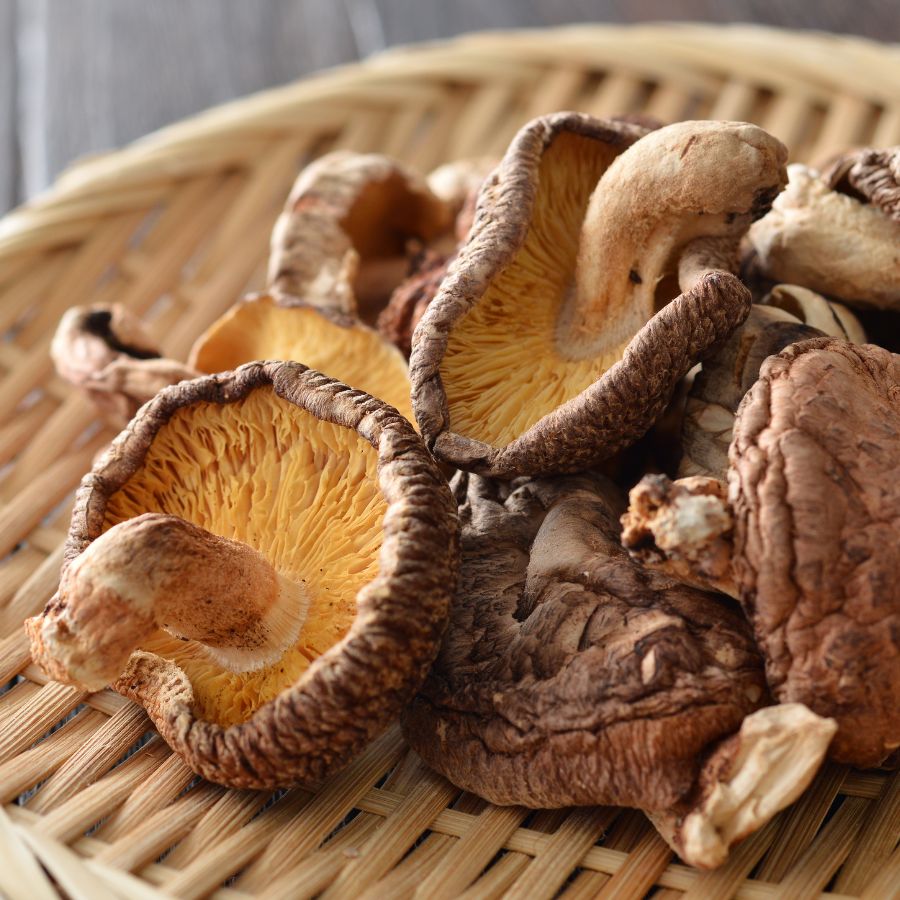
Some forageables, like dried morels or elderberries, can be stored for months without losing their value. These longer-lasting items are easier to sell and often bring in more money over time.
Others, like wild greens or edible flowers, have a short shelf life and need to be used quickly. Many easy-to-identify wild greens and herbs are best when fresh, but can be dried or preserved to extend their usefulness.
A Quick Reminder
Before we get into the specifics about where and how to find these mushrooms, we want to be clear that before ingesting any wild mushroom, it should be identified with 100% certainty as edible by someone qualified and experienced in mushroom identification, such as a professional mycologist or an expert forager. Misidentification of mushrooms can lead to serious illness or death.
All mushrooms have the potential to cause severe adverse reactions in certain individuals, even death. If you are consuming mushrooms, it is crucial to cook them thoroughly and properly and only eat a small portion to test for personal tolerance. Some people may have allergies or sensitivities to specific mushrooms, even if they are considered safe for others.
The information provided in this article is for general informational and educational purposes only. Foraging for wild mushrooms involves inherent risks.
Foraging Mistakes That Cost You Big Bucks
When you’re foraging for high-value plants, mushrooms, or other wild ingredients, every decision matters. Whether you’re selling at a farmers market or stocking your own pantry, simple mistakes can make your harvest less valuable or even completely worthless.
Harvesting at the Wrong Time
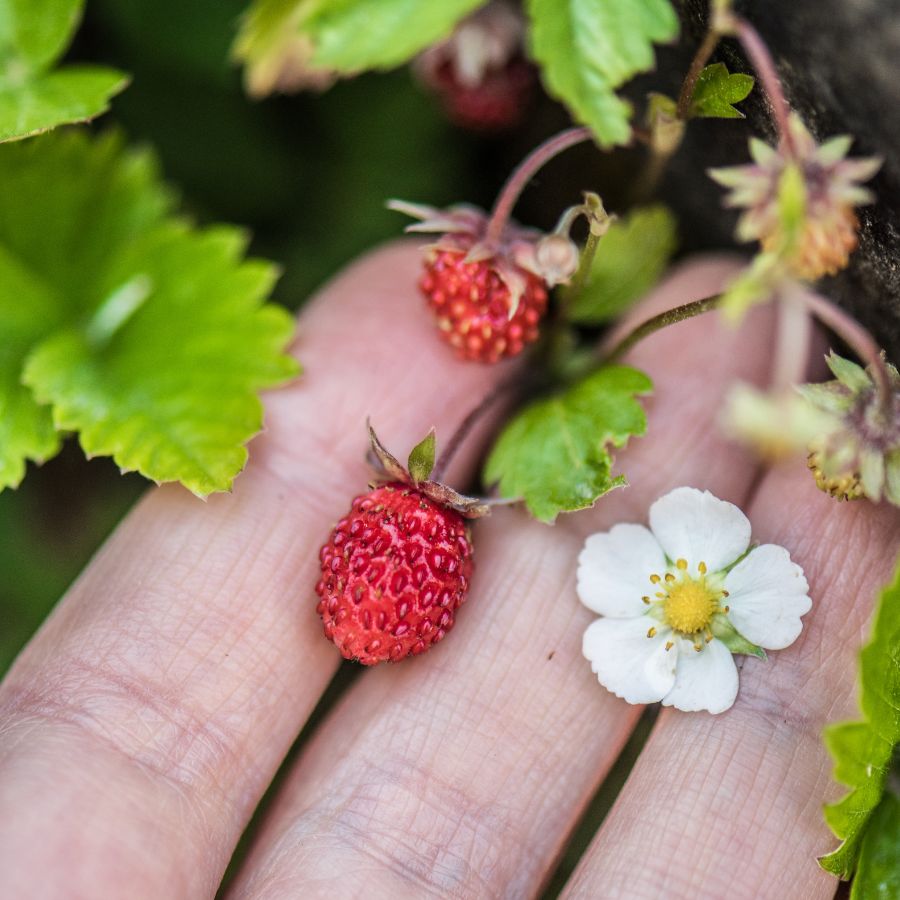
Harvesting at the wrong time can turn a valuable find into something no one wants. Plants and mushrooms have a short window when they’re at their best, and missing it means losing quality.
Morels, for example, shrink and dry out quickly once they mature, which lowers their weight and price. Overripe berries bruise in the basket and spoil fast, making them hard to store or sell.
Improper Handling After Harvest
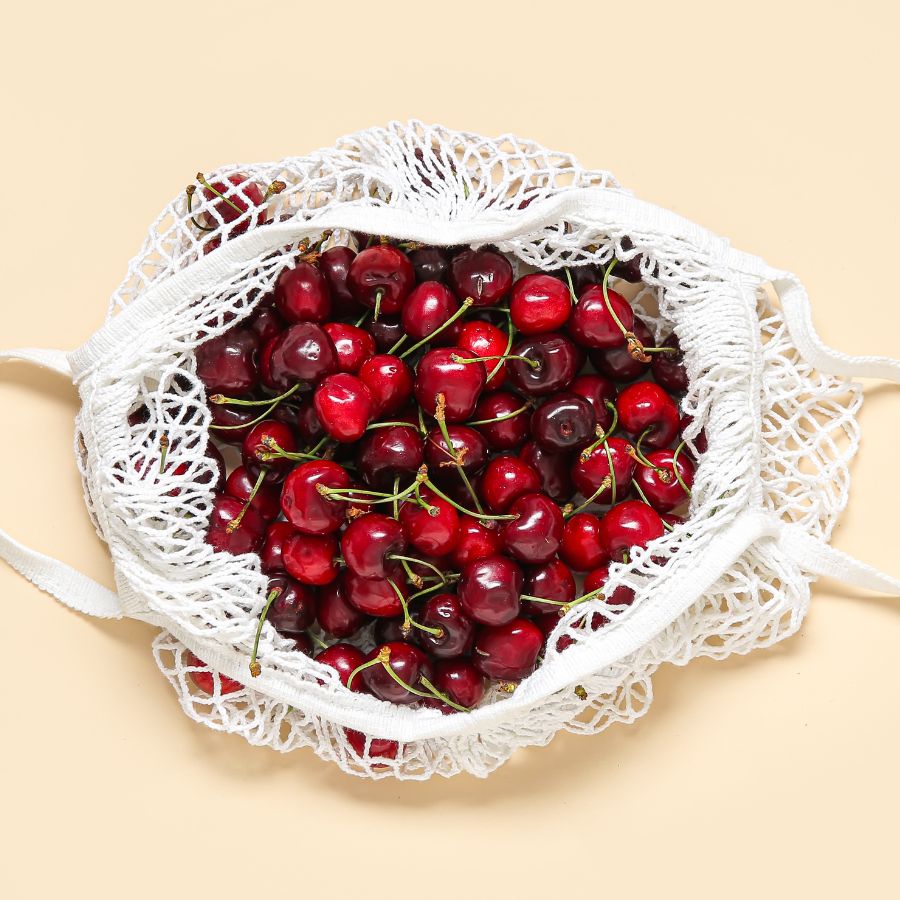
Rough handling can ruin even the most valuable forageables. Crushed mushrooms, wilted greens, and dirty roots lose both their appeal and their price.
Use baskets or mesh bags to keep things from getting smashed and let air circulate. Keeping everything cool and clean helps your harvest stay fresh and look better for longer.
This is especially important for delicate items like wild roots and tubers that need to stay clean and intact.
Skipping Processing Steps
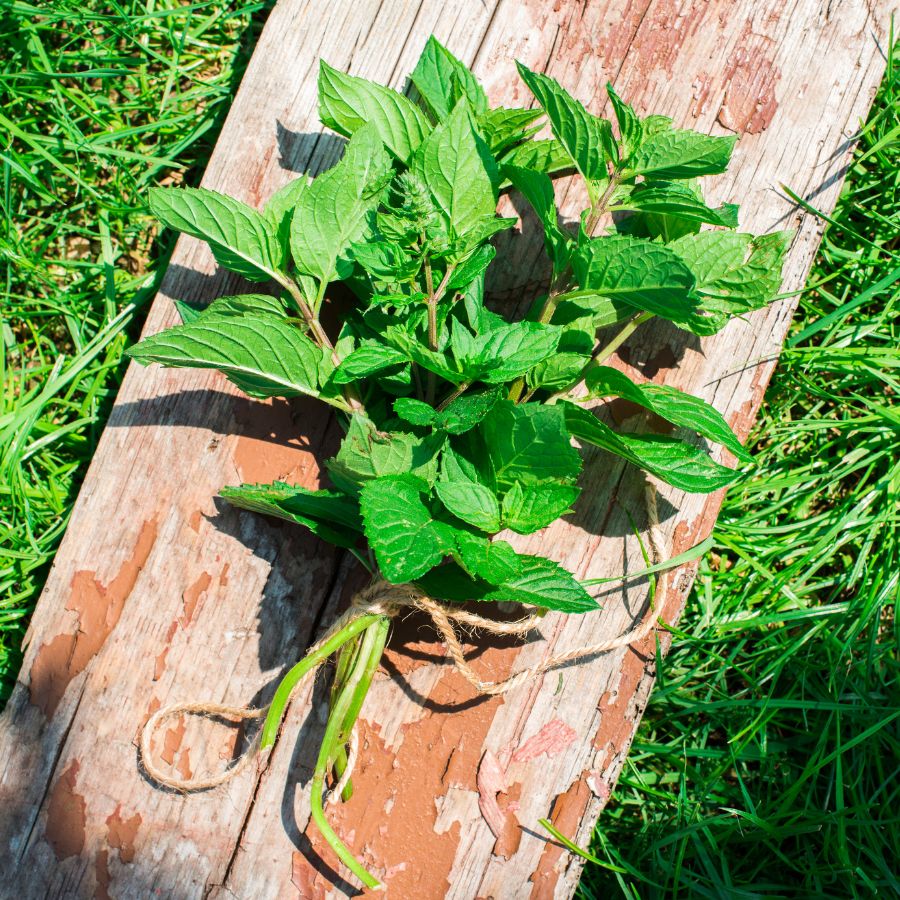
Skipping basic processing steps can cost you money. A raw harvest may look messy, spoil faster, or be harder to use.
For example, chaga is much more valuable when dried and cut properly. Herbs like wild mint or nettle often sell better when bundled neatly or partially dried. If you skip these steps, you may end up with something that looks unappealing or spoils quickly.
Collecting from the Wrong Area
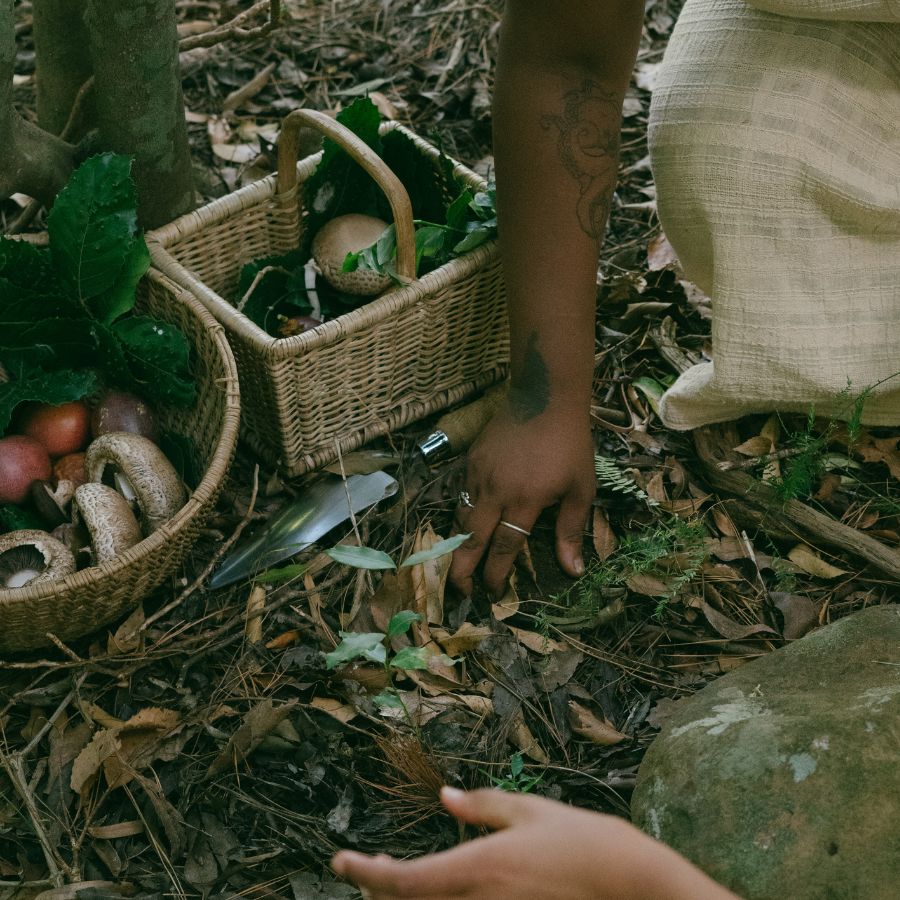
Harvesting in the wrong place can ruin a good find. Plants and mushrooms pulled from roadsides or polluted ground may be unsafe, no matter how fresh they look.
Buyers want to know their food comes from clean, responsible sources. If a spot is known for overharvesting or damage, it can make the whole batch less appealing.
These suburbia foraging tips can help you find overlooked spots that are surprisingly safe and productive.
Not Knowing the Market
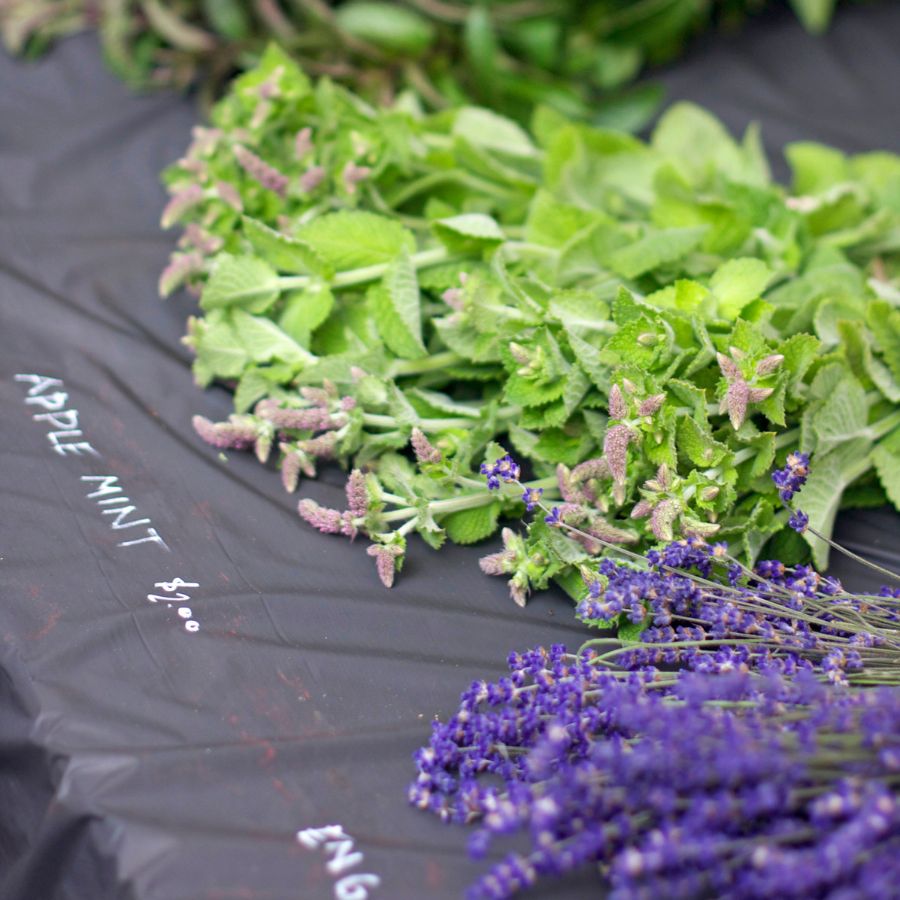
A rare plant isn’t valuable if nobody wants to buy it. If you gather in-demand species like wild ramps or black trumpets, you’re more likely to make a profit. Pay attention to what chefs, herbalists, or vendors are actually looking for.
Foraging with no plan leads to wasted effort and unsold stock. Keeping up with demand helps you bring home a profit instead of a pile of leftovers.
You can also brush up on foraging for survival strategies to identify the most versatile and useful wild foods.
Before you head out
Before embarking on any foraging activities, it is essential to understand and follow local laws and guidelines. Always confirm that you have permission to access any land and obtain permission from landowners if you are foraging on private property. Trespassing or foraging without permission is illegal and disrespectful.
For public lands, familiarize yourself with the foraging regulations, as some areas may restrict or prohibit the collection of mushrooms or other wild foods. These regulations and laws are frequently changing so always verify them before heading out to hunt. What we have listed below may be out of date and inaccurate as a result.
The Most Valuable Forageables in the State
Some of the most sought-after wild plants and fungi here can be surprisingly valuable. Whether you’re foraging for profit or personal use, these are the ones worth paying attention to:
Black Trumpet Mushroom (Craterellus fallax)
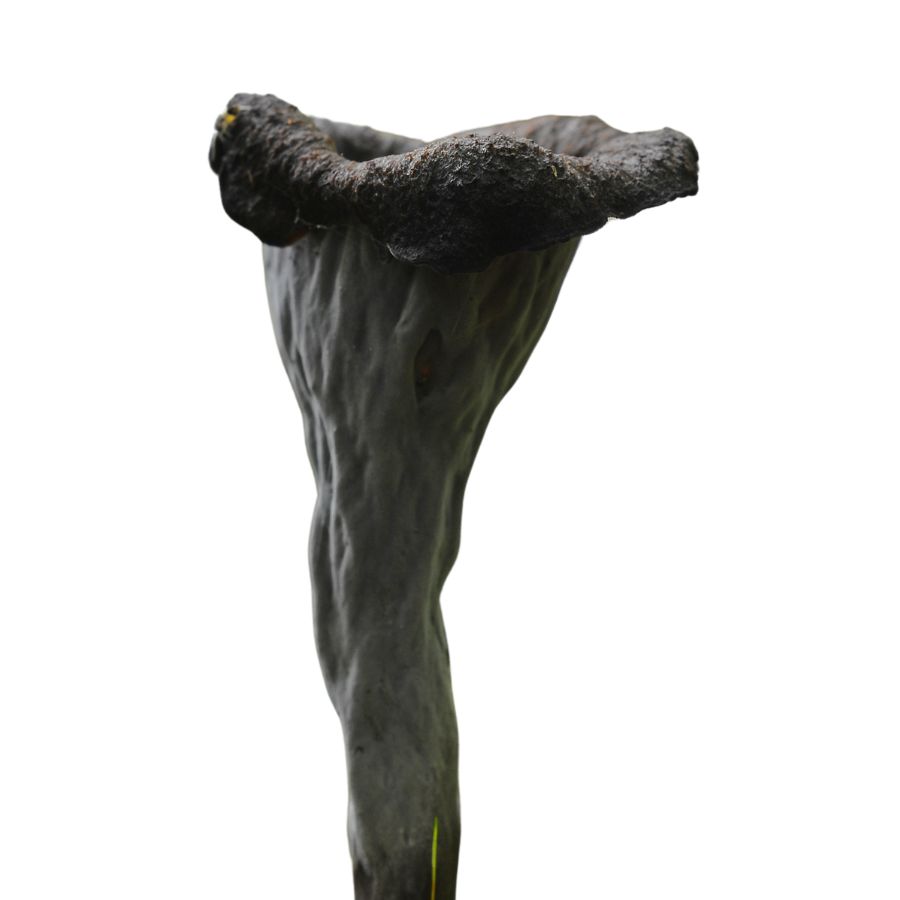
Black trumpets look like dark, hollow funnels poking up from the forest floor. They grow 2-5 inches tall with thin, wavy edges that curl outward. Their color ranges from dark gray to black, which makes them hard to spot among fallen leaves. They smell woodsy and taste rich and smoky.
You’ll find these mushrooms in hardwood forests, especially near oak and beech trees. They form helpful relationships with these trees’ roots. The first one is always the hardest to find because they blend in so well.
The good news is that black trumpets have no poisonous look-alikes. The whole mushroom is edible, but you’ll need to clean out dirt and bugs from their hollow centers.
Cooks love black trumpets for their strong flavor in soups and egg dishes. Some people say they taste a bit like expensive truffles, which is why they’re sometimes called “poor man’s truffles.”
Hen of the Woods (Grifola frondosa)
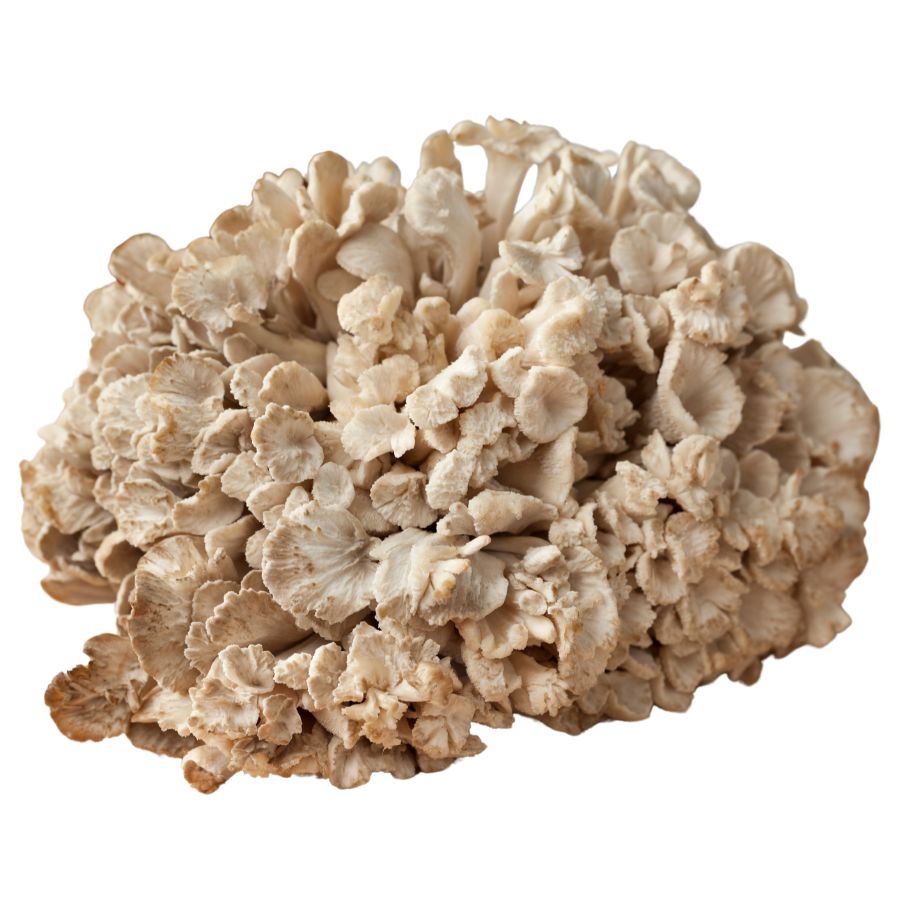
At the base of oak trees in fall, you might find what looks like a big, ruffled chicken made of mushrooms. This is hen of the woods. The overlapping caps are grayish-brown on top and white underneath. Instead of gills, they have tiny pores on the bottom.
This mushroom can grow huge; sometimes up to 50 pounds! The flesh is firm but becomes tender when cooked. It tastes savory and rich.
You can eat all parts except the tough base where it connects to the tree. Hen of the woods often grows in the same spot year after year if you’re lucky.
A similar-looking mushroom is Berkeley’s polypore, but it has thicker caps. In Japan, people call this mushroom “maitake” and use it for food and medicine. Foragers prize hen of the woods because it has a meaty texture that’s great for cooking.
Spicebush Berries (Lindera benzoin)
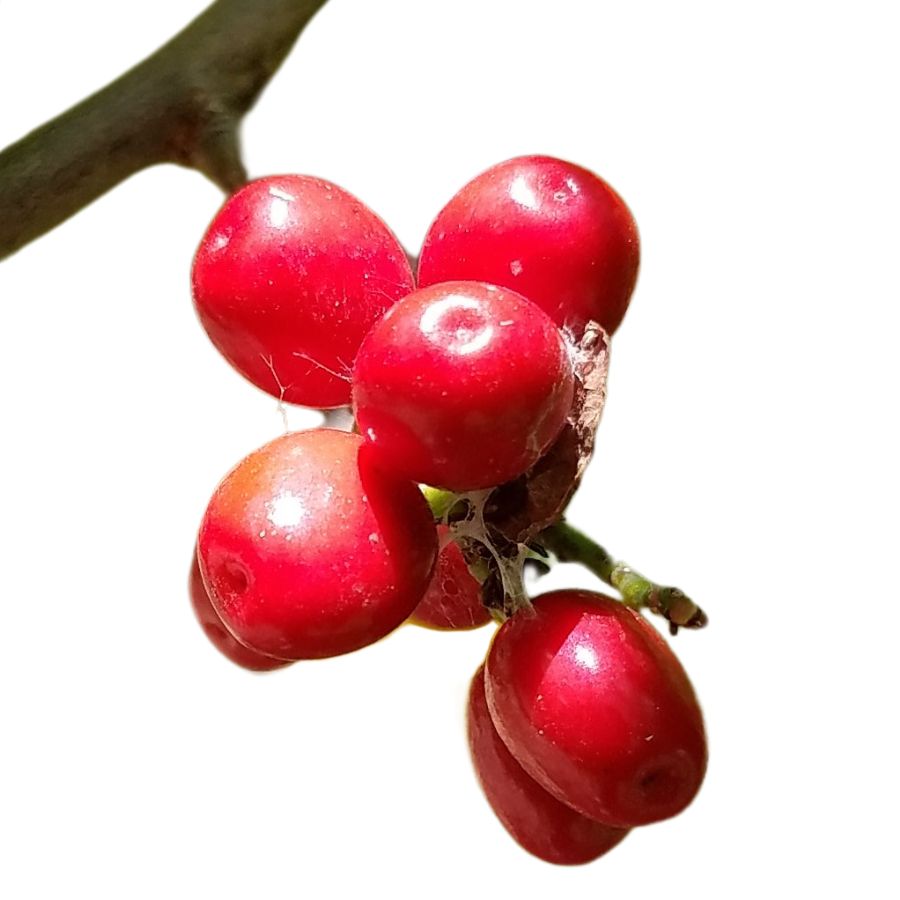
Spicebush has smooth-edged leaves that release a spicy citrus scent when crushed, and it produces clusters of red berries that grow close to the stem. Those berries, along with the young twigs and leaves, are all edible and flavorful.
The berries are especially valued for their warm, peppery kick and are often dried and ground as a seasoning. You can steep the leaves and twigs into tea or simmer them into broths.
Avoid confusing it with lookalikes like Carolina allspice, which has larger, thicker leaves and lacks the same aromatic quality. Its berries also differ in size and internal seed structure.
Spicebush has a long history of use in traditional cooking for its mild numbing effect and warming flavor. Only the berries, leaves, and tender twigs should be consumed—avoid the bark and roots.
Chickasaw Plum (Prunus angustifolia)

The Chickasaw plum grows as a thorny shrub with small, round fruits. These fruits start yellow and ripen to red with a light blue coating. Each plum is only about an inch across but packs a sweet-tart punch when ripe.
Native Americans grew these plums long before Europeans arrived in America. The juicy flesh surrounds a single seed. Be careful—the seed contains compounds that can be harmful if crushed and eaten.
In early spring, the shrubs burst with white flowers before the leaves appear. This makes them easy to spot. The plants spread by sending up new shoots from their roots, creating thick patches over time.
These wild plums taste good fresh, but they’re even better in jams and jellies. They naturally contain pectin, which helps jams thicken without adding anything extra.
Wild Muscadine Grapes (Vitis rotundifolia)
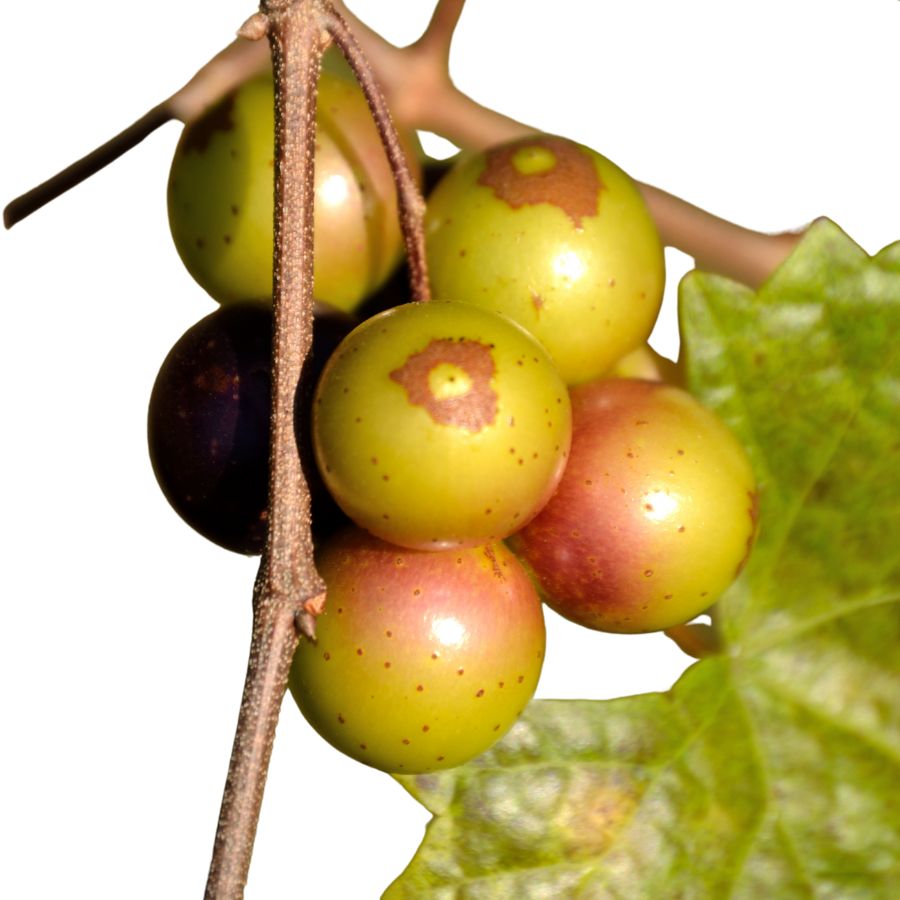
Wild muscadines are native grapes that grow throughout the Southeast. They come in bronze or dark purple colors with thick skins. Unlike store-bought grapes that grow in big bunches, muscadines grow in small groups of 3-10 berries.
Each grape has a little circular mark where it was attached to the vine. The sweet pulp inside pops out easily when the grape is ripe. You can eat the skins and seeds, though many people spit them out because they taste bitter.
Muscadine vines climb high into trees and can grow over 100 feet long. The bark peels in strips, and the leaves have jagged edges. Be careful not to confuse them with moonseed, which is poisonous and has crescent-shaped seeds.
These wild grapes are full of healthy antioxidants, especially in their skins. They make delicious jelly, juice, and wine with a unique sweet-wild flavor that store-bought grapes don’t have.
River Cane Shoots (Arundinaria gigantea)
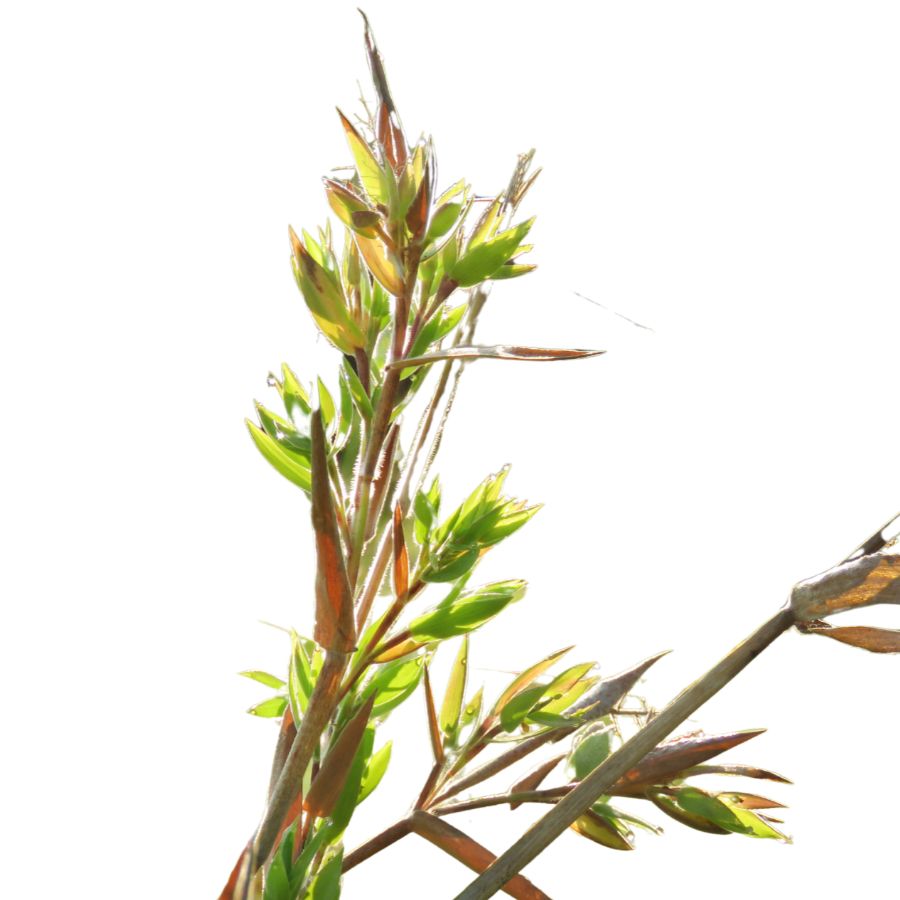
River cane is North America’s native bamboo. The young shoots push up from the ground like spears and taste similar to the bamboo shoots you might find in Asian cooking, but with more flavor.
Long ago, river cane formed huge areas called “canebrakes” along southern rivers and streams. Some of these canebrakes stretched for miles!
You should only harvest the shoots when they’re young and under a foot tall. Once they grow bigger, they become too woody to eat. Before cooking, peel off the tough outer leaves and boil the shoots for about 30 minutes, changing the water once to remove any bitter taste.
Native Americans used mature cane stems for making baskets, fishing poles, and even blowguns. River cane provides homes for many animals, including some rare birds. When harvested carefully, the shoots offer a wild food that grows back quickly.
Wild Passionfruit (Passiflora incarnata)
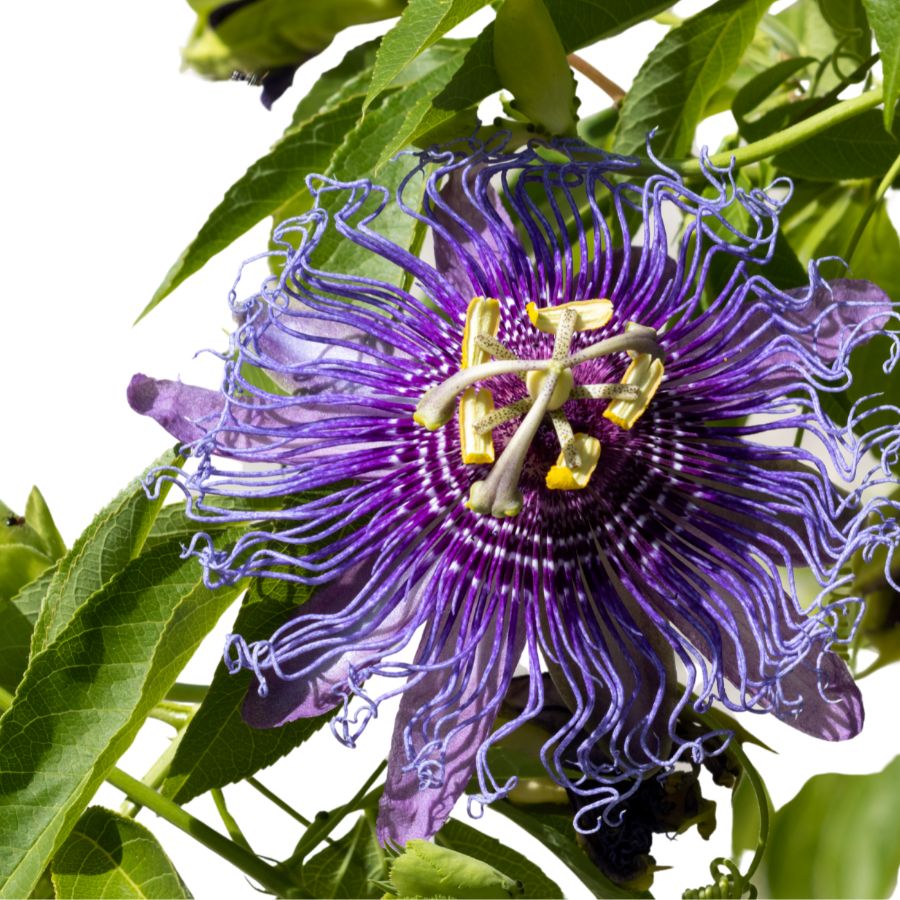
The delicate purple flowers of wild passionfruit stand out in summer meadows with their unique structure resembling a crown. This native vine climbs up trees and fences using curly tendrils. The fruit starts green then turns yellowish when ripe, containing small seeds surrounded by sweet pulp.
To identify wild passionfruit, look for its three-lobed leaves and those unmistakable flowers with purple filaments. The edible parts include both the ripe fruits and the flowers themselves.
Unlike some similar-looking plants, wild passionfruit has distinctive flowers that prevent confusion with toxic lookalikes. The fruits taste sweet with a tropical flavor that works well in drinks and desserts.
Many foragers value wild passionfruit for its calming properties. Traditional herbalists have used the plant for sleep support and to reduce anxiety, making it both a tasty and useful find.
Wild Persimmon (Diospyros virginiana)
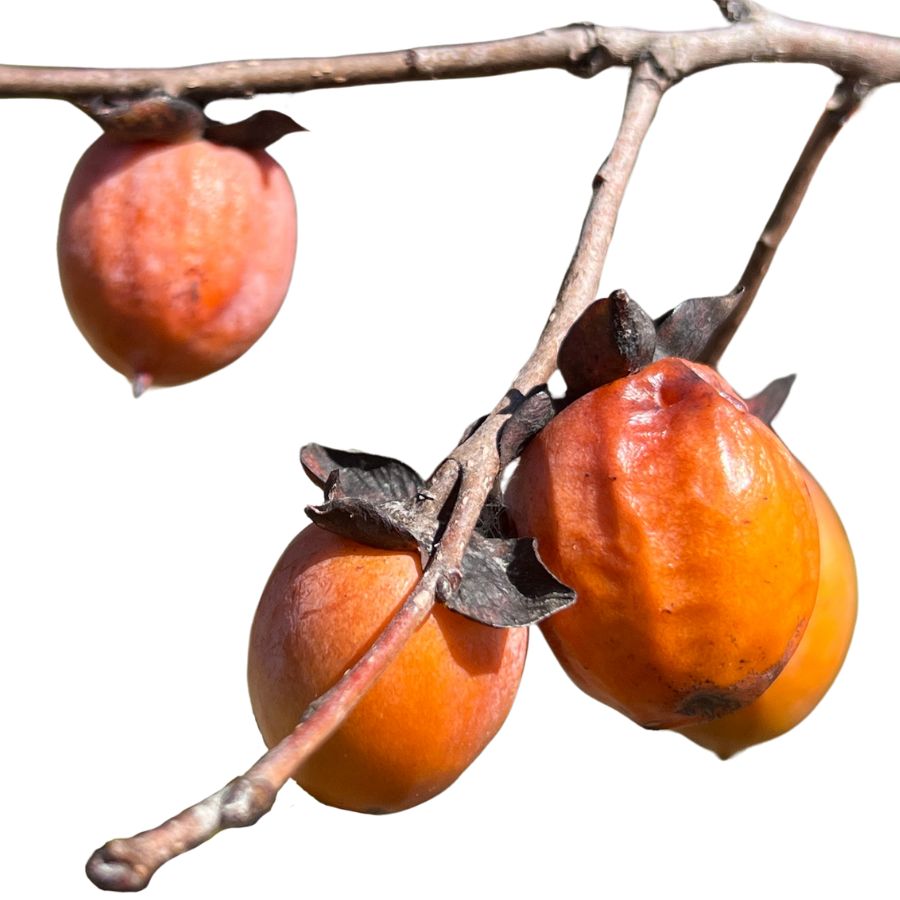
Persimmon, sometimes called American persimmon or common persimmon, grows as a small tree with rough, blocky bark and oval-shaped leaves. The fruit looks like a small, flattened tomato and turns a deep orange or reddish color when ripe.
If you bite into an unripe persimmon, you will quickly notice an extremely astringent, mouth-drying effect. A ripe persimmon, on the other hand, tastes sweet, rich, and custard-like, with a soft and jelly-like texture inside.
You can eat persimmons fresh once they are fully ripe, or you can cook them down into puddings, jams, and baked goods. Some people also mash and freeze the pulp to use later for pies, breads, and sauces.
Wild persimmons can sometimes be confused with black nightshade berries, but nightshade fruits are much smaller, grow in clusters, and stay dark purple or black. Only the ripe fruit of the persimmon tree should be eaten; the seeds and the unripe fruit are not edible.
Greenbrier Shoots (Smilax bona-nox)
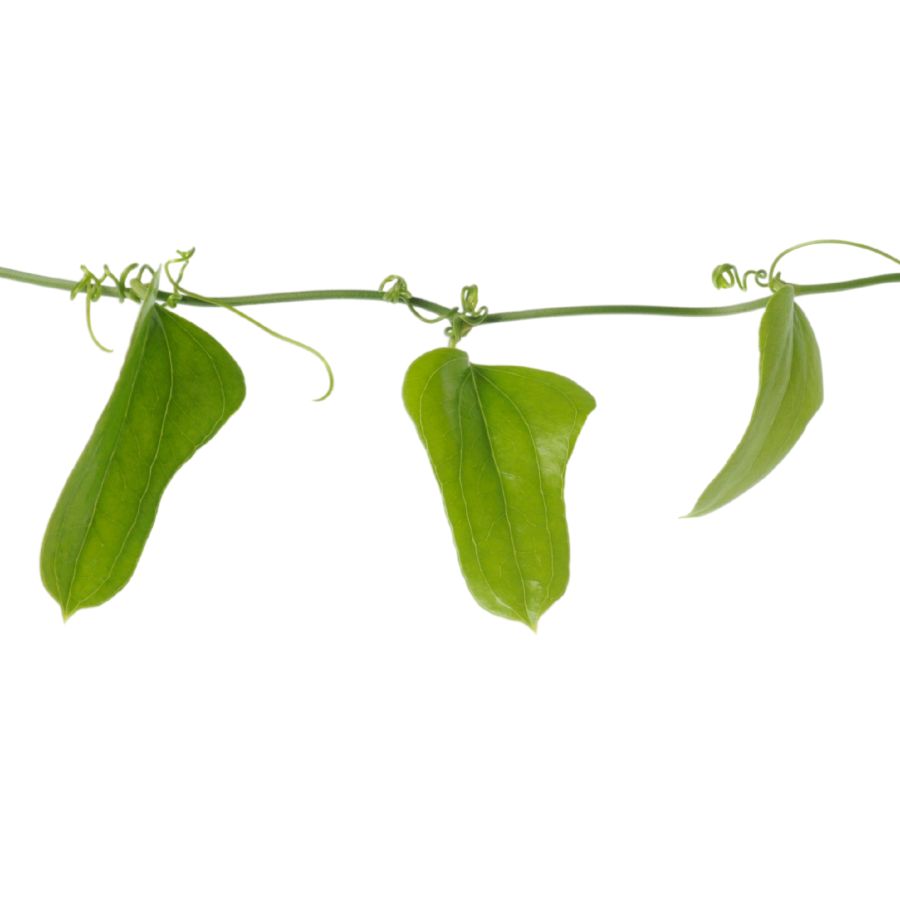
Young greenbrier shoots emerge in spring as tender, asparagus-like stalks before developing their characteristic thorns. These climbing vines have glossy, heart-shaped leaves that sometimes show white markings. Greenbrier belongs to the same family as sarsaparilla and was historically used as a medicine.
Harvesting should focus on the new growth tips before they become woody. When cooked, they offer a mild green flavor similar to asparagus or green beans.
Greenbrier can be identified by its zigzag growth pattern and thorns along the stems. Be careful not to confuse it with similar vines like poison ivy, which has three leaflets instead of single leaves.
The young shoots can be steamed, sautéed, or added to soups. Older parts become too tough to eat. Many wild food enthusiasts seek greenbrier shoots as one of the first wild vegetables available in spring.
Nodding Wild Onion (Allium cernuum)
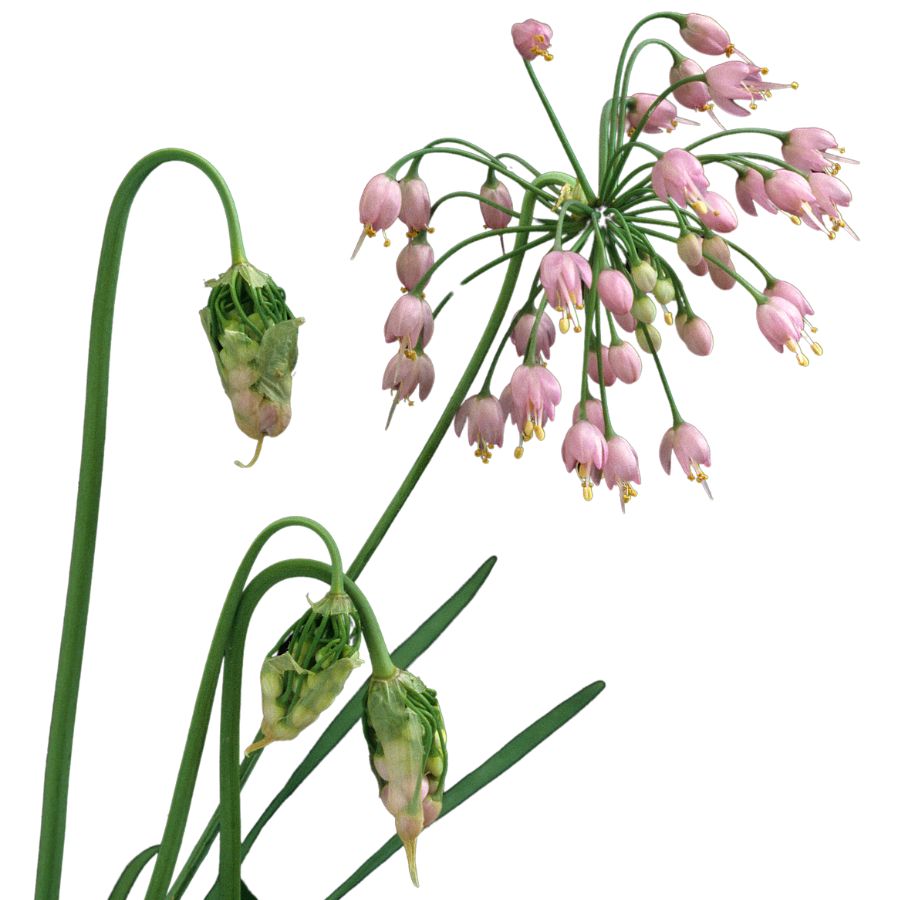
When you come across nodding onions, you’ll notice the drooping flower heads perched on tall, slender stalks. The narrow, grass-like leaves and the pinkish-white blossoms help distinguish them from toxic lookalikes like death camas, which lacks the onion smell when crushed.
You can eat the leaves, bulbs, and flowers, all of which carry a strong onion flavor with a slightly sweet finish. The texture is crisp when raw and softens nicely when sautéed or added to soups.
One popular way to use nodding onions is to mince the greens into spreads or salads, or grill the bulbs whole like scallions. Pickling the flower buds is another method that preserves their tang and adds punch to charcuterie boards.
Avoid harvesting from roadsides or polluted areas, since these plants can absorb contaminants through their roots. While edible, the plant loses flavor quickly after picking, so it’s best to use it fresh whenever possible.
Pecan Nuts (Carya illinoinensis)
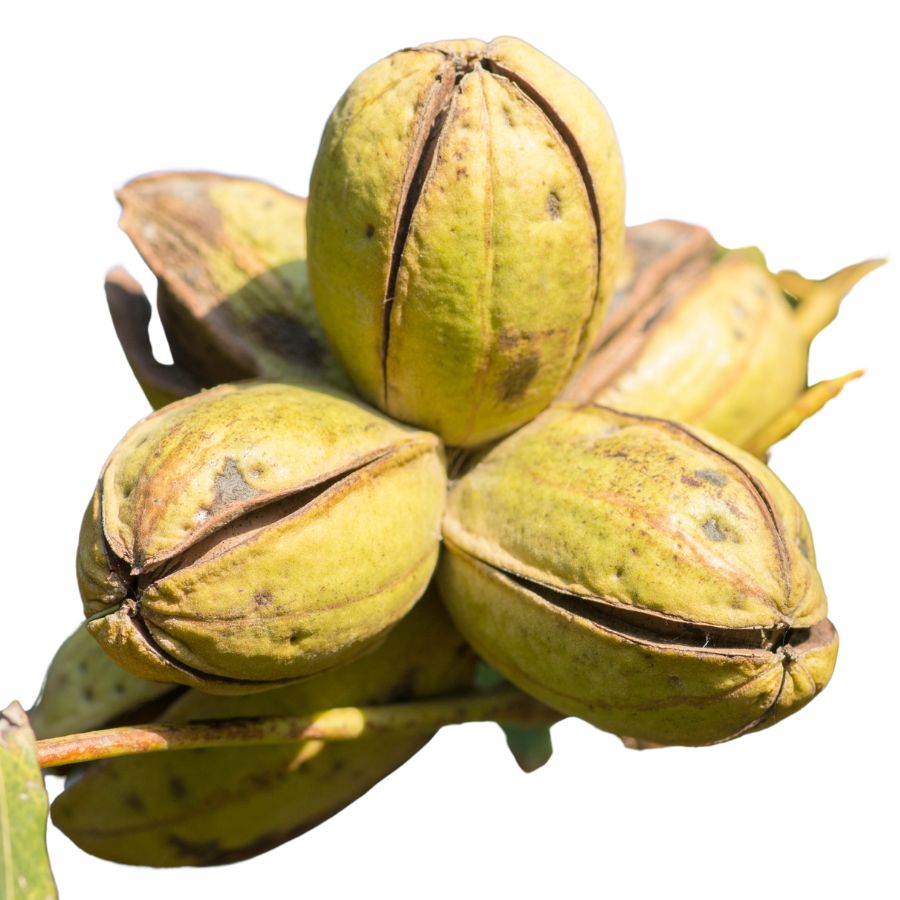
Pecan trees are sometimes called sweet pecans or just pecans, and they are easy to recognize once you know what to look for. They grow tall with long, feather-like leaves and produce a thick-shelled nut that splits open when ripe, revealing the edible part inside.
The nuts are hidden inside a smooth brown shell surrounded by a greenish husk. Some types of hickory nuts can look similar, but pecans are more elongated and have a thinner shell that cracks more easily.
Pecans have a rich, buttery flavor with a slightly sweet aftertaste, and their texture is firm yet tender when fresh. They are commonly roasted, baked into pies, or used raw in salads and desserts for added crunch and flavor.
Be careful not to eat the green outer husk or the hard shell, as only the nutmeat inside is edible. When gathering pecans, make sure they are fully ripened and free from mold or bitterness, which can ruin their flavor.
Elderflower (Sambucus canadensis)
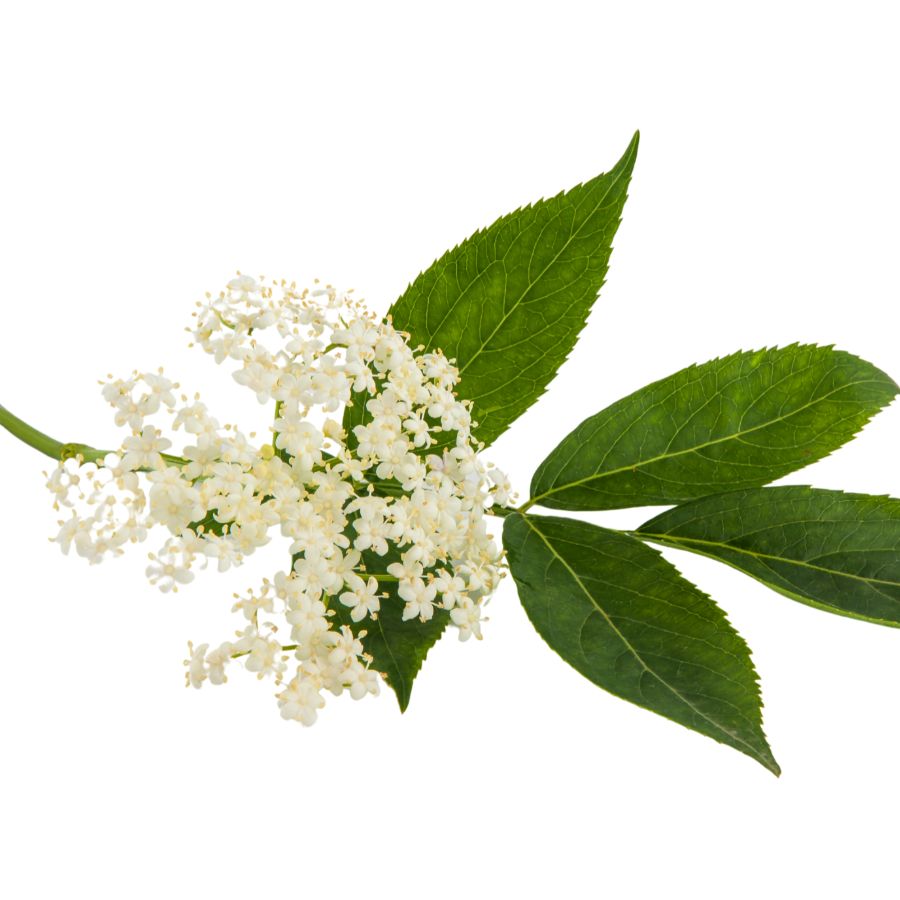
Flat clusters of tiny white flowers create lacy umbrellas atop the branches of elderberry shrubs in early summer. These fragrant blooms give off a sweet, honey-like scent with hints of citrus. Each elderflower cluster contains hundreds of small flowers.
Elderflower can be used to make cordials, teas, and even fried into fritters. The flowers must be harvested when freshly opened and used quickly.
When foraging elderflower, ensure you’re collecting from Sambucus canadensis, not the red elderberry, which has toxic properties. Look for the compound leaves with 5-11 leaflets and the distinctive flat-topped flower clusters.
Only the flowers and fully ripe berries are safe to eat. The stems, leaves, roots, and unripe berries contain compounds that can cause stomach upset. Elderflower has long been valued in folk medicine for treating colds and fever, and its delicate flavor makes it popular in beverages.
Toothwort Root (Cardamine concatenata)
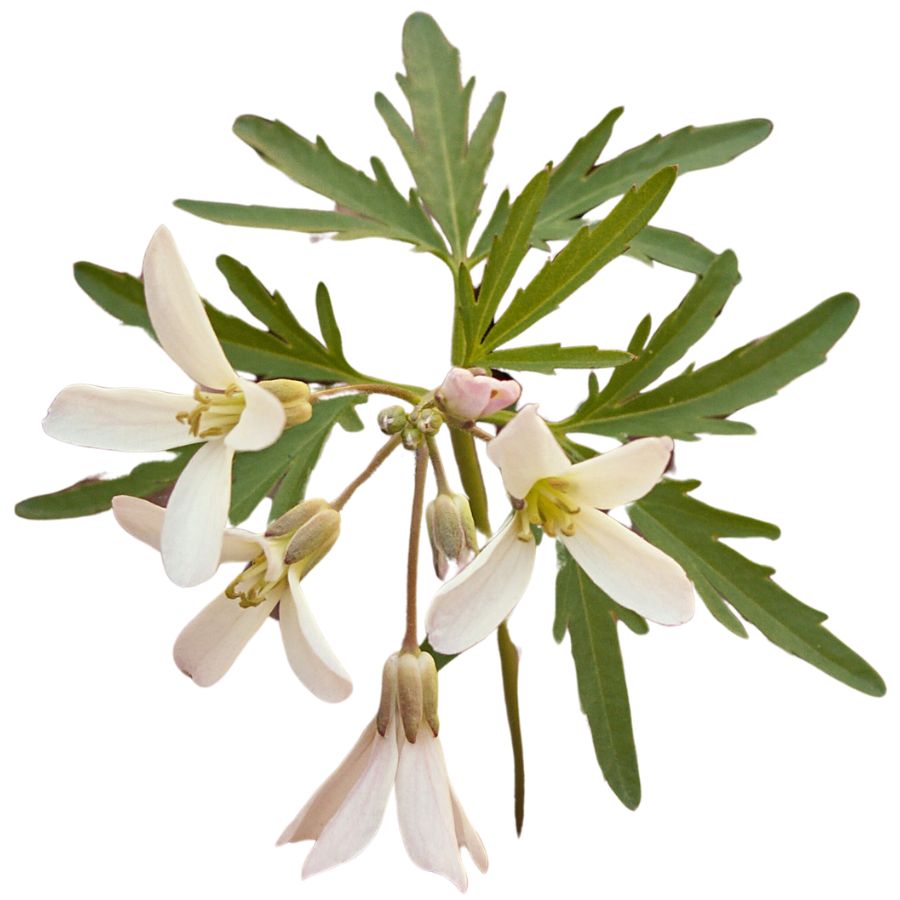
Toothwort, often referred to as pepperroot or crinkleroot, has ragged-edged basal leaves and a string of knobby white rhizomes underground that look like a broken necklace. The rhizomes deliver a pungent flavor somewhere between mustard and horseradish, with a satisfying crunch.
Some people mistake it for cutleaf toothwort, which is also edible, but the more deeply lobed leaves and less spicy root can help you distinguish the two. A bigger concern is confusing it with young hellebore shoots, which lack the segmented roots and are toxic.
The roots can be eaten raw or lightly cooked and are especially good grated into vinegar-based slaws or added to mustards. If you’re fermenting vegetables, adding shaved crinkleroot gives the mix a lively heat.
Leaves and flowers are edible but lack the punch of the rhizome and tend to wilt quickly, making them less useful. You don’t need to cook the root, but heating it slightly can mellow the bite without losing the flavor.
Jerusalem Artichoke (Helianthus tuberosus)
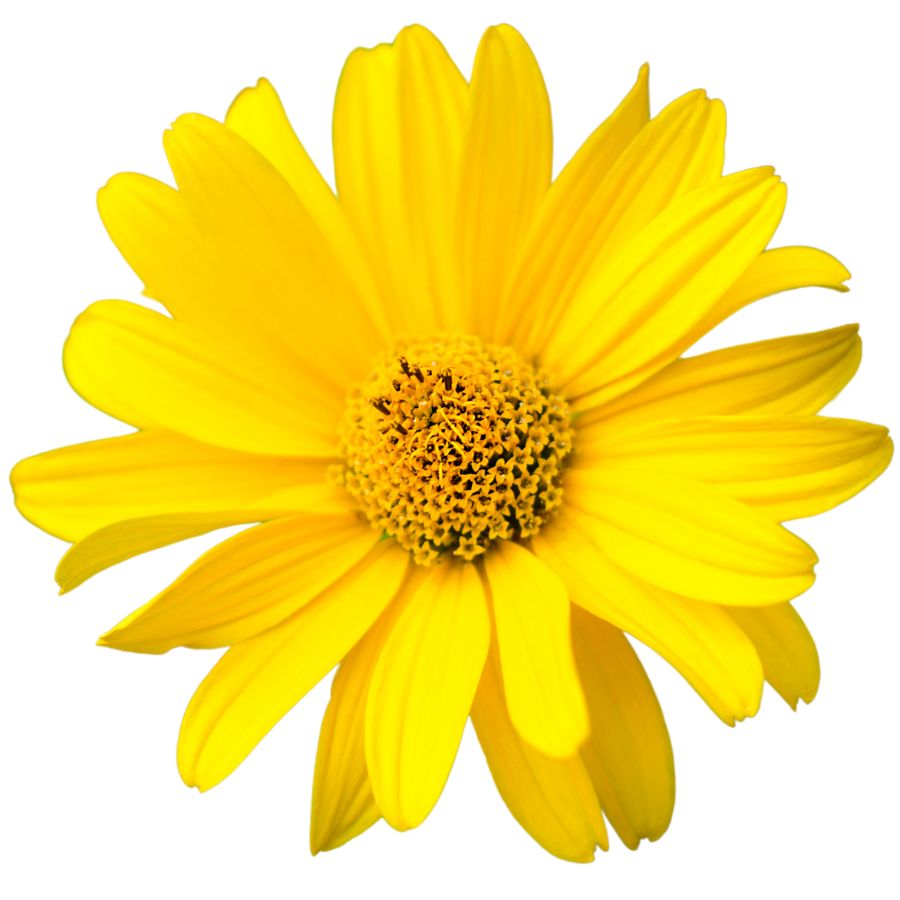
Jerusalem artichoke grows tall with sunflower-like blooms and has knobby underground tubers. The tubers are tan or reddish and look a bit like ginger root, though they belong to the sunflower family.
The part you’re after is the tuber, which has a nutty, slightly sweet flavor and a crisp texture when raw. You can roast, sauté, boil, or mash them like potatoes, and they hold their shape well in soups and stir-fries.
Some people experience gas or bloating after eating sunchokes due to the inulin they contain, so it’s a good idea to try a small amount first. Cooking them thoroughly can help reduce the chances of digestive discomfort.
Sunchokes don’t have many dangerous lookalikes, but it’s important not to confuse the plant with other sunflower relatives that don’t produce tubers. The above-ground part resembles a small sunflower, but it’s the knotted, underground tubers that are worth digging up.
Hickory Nuts (Carya laciniosa, Carya ovata)
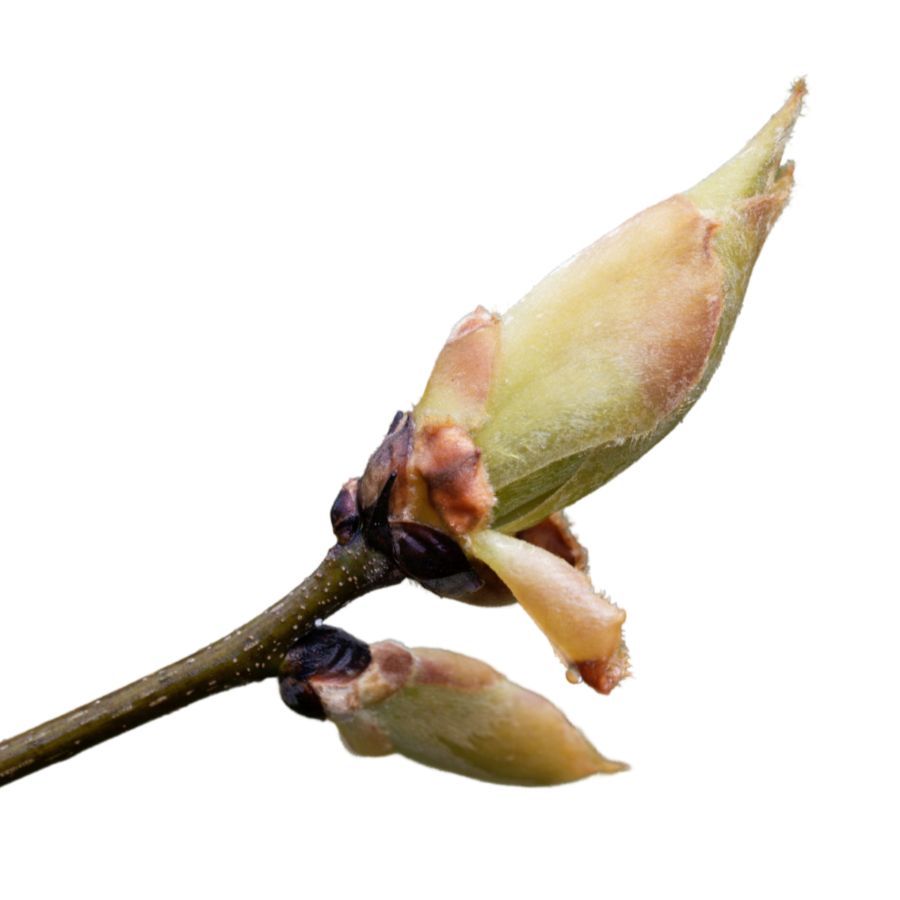
Hickory trees produce hard-shelled nuts encased in thick green husks that split open when ripe. The shellbark (Carya laciniosa) and shagbark (Carya ovata) varieties yield the sweetest, most flavorful nuts with a rich buttery taste. Their distinctive bark peels away in long strips on mature trees.
The nuts fall to the ground in autumn and can be gathered after the outer husk splits. Inside the hard shell lies sweet, nutritious meat that’s worth the effort to extract.
Hickory nuts are packed with healthy fats, protein, and minerals. They can be eaten raw, roasted, or ground into meal for baking.
To identify hickory trees, look for compound leaves with 5-9 leaflets and the characteristic shaggy bark. Don’t confuse them with black walnut or butternut, which have similar nuts but different bark patterns. Many foragers consider hickory nuts among the finest wild foods due to their exceptional flavor and nutritional value.
Where to Find Valuable Forageables in the State
Some parts of the state are better than others when it comes to finding valuable wild plants and mushrooms. Here are the different places where you’re most likely to have luck:
| Plants | Locations |
|---|---|
| Black Trumpet Mushroom (Craterellus fallax) | – Ozark Highlands Trail near Ozone – Rattlesnake Ridge Natural Area – Lake Sylvia Recreation Area |
| Hen of the Woods (Grifola frondosa) | – Village Creek State Park hardwoods – Mount Nebo slopes – Richland Creek WMA oak stands |
| Spicebush Berries (Lindera benzoin) | – Woolly Hollow State Park – Cadron Settlement Park – Bell Slough Wildlife Management Area |
| Chickasaw Plum (Prunus angustifolia) | – Ouachita Mountains foothills near Jessieville – Old Washington Historic State Park – Delta Heritage Trail area |
| Wild Muscadine Grapes (Vitis rotundifolia) | – Lake Columbia area near Magnolia – Moro Bay vicinity – Cane Creek State Park wood edges |
| River Cane Shoots (Arundinaria gigantea) | – Bayou Bartholomew Wildlife Area – Cossatot River bottoms – St. Francis River near Parkin |
| Wild Passionfruit (Passiflora incarnata) | – Prairie Grove Battlefield Park edges – Near Lake Frierson – Along roadsides near Stuttgart |
| Wild Persimmon (Diospyros virginiana) | – Village Creek floodplain – Lake Chicot vicinity – Ozark National Forest fringe zones |
| Greenbrier Shoots (Smilax bona-nox) | – Poison Springs State Forest – Lake Dardanelle trail system – Felsenthal WMA edges |
| Nodding Wild Onion (Allium cernuum) | – Petit Jean Mountain meadows – Devil’s Knob Natural Area – Kingfisher Trail near Fort Smith |
| Pecan Nuts (Carya illinoinensis) | – Cache River basin – Along Saline River near Benton – Bayou DeView Conservation Area |
| Elderflower (Sambucus canadensis) | – Near Spring Lake in Yell County – Remmel Dam area – Strawberry River corridor |
| Toothwort Root (Cardamine concatenata) | – Blanchard Springs forest floor – Mount Magazine east slope – Greers Ferry Lake area woods |
| Jerusalem Artichoke (Helianthus tuberosus) | – White River bank near Batesville – Maumelle River Trail edges – Big Lake WMA margins |
| Hickory Nuts (Carya laciniosa, Carya ovata) | – Lake Catherine woodlands – Crooked Creek near Yellville – Near Caddo River in Glenwood |
When to Forage for Maximum Value
Every valuable wild plant or mushroom has its season. Here’s a look at the best times for harvest:
| Plants | Valuable Parts | Best Harvest Season |
|---|---|---|
| Black Trumpet Mushroom (Craterellus fallax) | Fruiting bodies | July – September |
| Hen of the Woods (Grifola frondosa) | Fruiting bodies | September – November |
| Spicebush Berries (Lindera benzoin) | Ripe berries, leaves | Leaves: May – July, Berries: August – September |
| Chickasaw Plum (Prunus angustifolia) | Ripe fruits | June – August |
| Wild Muscadine Grapes (Vitis rotundifolia) | Ripe fruits | August – October |
| River Cane Shoots (Arundinaria gigantea) | Young shoots | March – May |
| Wild Passionfruit (Passiflora incarnata) | Ripe fruits, flowers | Flowers: June – August, Fruits: August – October |
| Wild Persimmon (Diospyros virginiana) | Ripe fruits | September – November |
| Greenbrier Shoots (Smilax bona-nox) | Young shoots | March – May |
| Nodding Wild Onion (Allium cernuum) | Bulbs, leaves, flower stalks | April – July |
| Pecan Nuts (Carya illinoinensis) | Shelled nuts | October – November |
| Elderflower (Sambucus canadensis) | Flowers, ripe berries | Flowers: May – June, Berries: July – August |
| Toothwort Root (Cardamine concatenata) | Rhizomes | February – April |
| Jerusalem Artichoke (Helianthus tuberosus) | Tubers | October – December |
| Hickory Nuts (Carya laciniosa, Carya ovata) | Shelled nuts | September – October |
One Final Disclaimer
The information provided in this article is for general informational and educational purposes only. Foraging for wild plants and mushrooms involves inherent risks. Some wild plants and mushrooms are toxic and can be easily mistaken for edible varieties.
Before ingesting anything, it should be identified with 100% certainty as edible by someone qualified and experienced in mushroom and plant identification, such as a professional mycologist or an expert forager. Misidentification can lead to serious illness or death.
All mushrooms and plants have the potential to cause severe adverse reactions in certain individuals, even death. If you are consuming foraged items, it is crucial to cook them thoroughly and properly and only eat a small portion to test for personal tolerance. Some people may have allergies or sensitivities to specific mushrooms and plants, even if they are considered safe for others.
Foraged items should always be fully cooked with proper instructions to ensure they are safe to eat. Many wild mushrooms and plants contain toxins and compounds that can be harmful if ingested.

